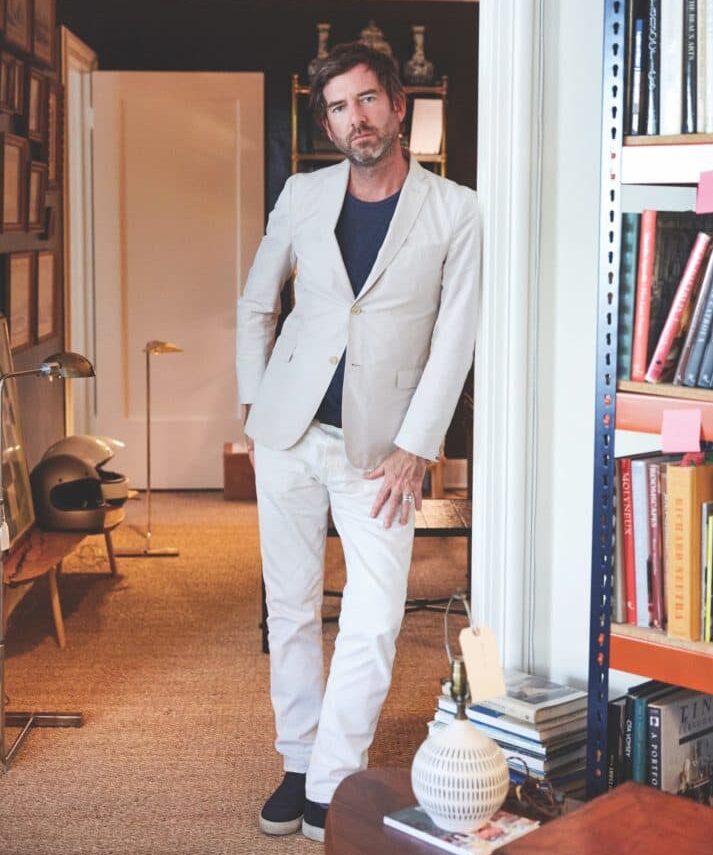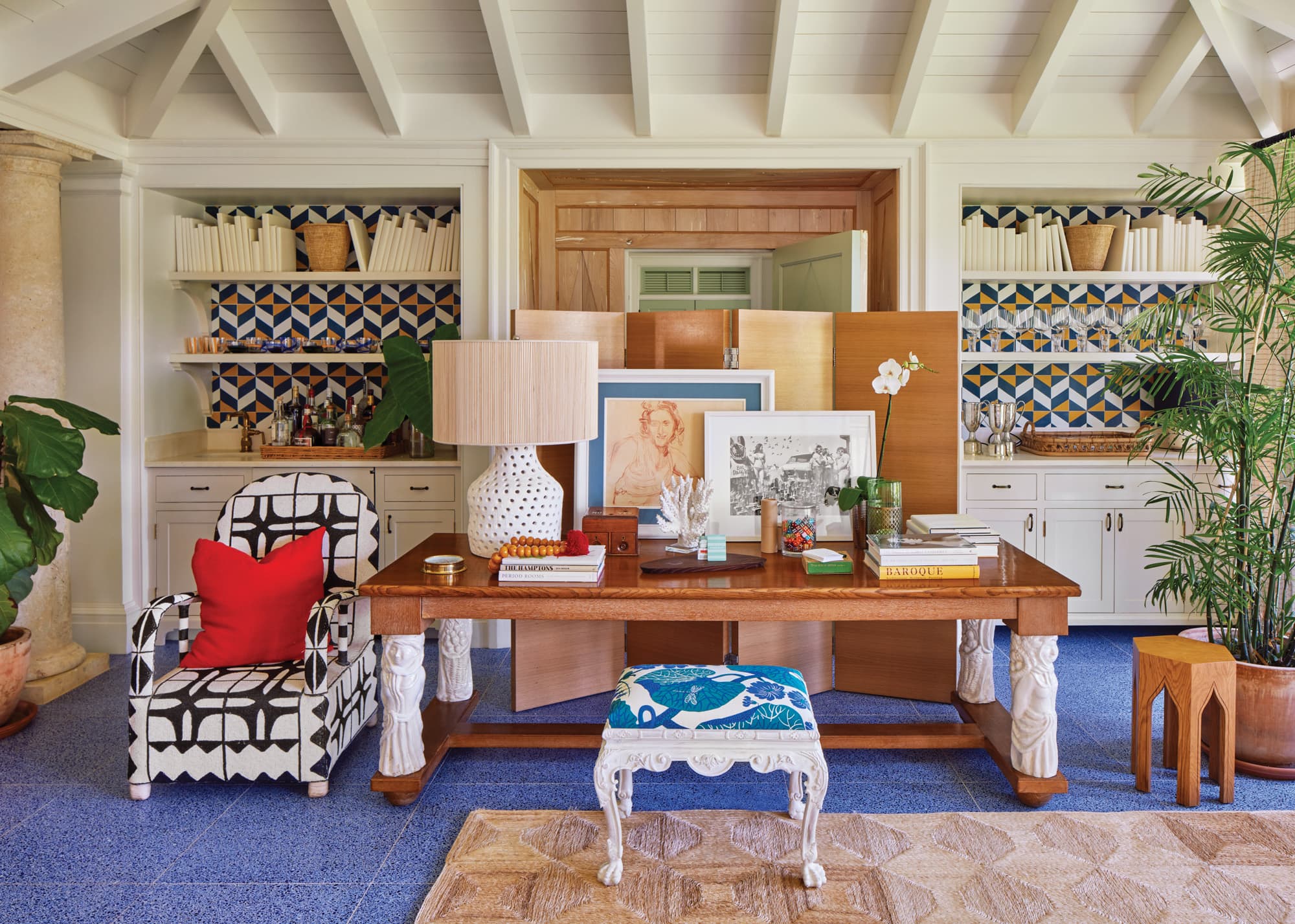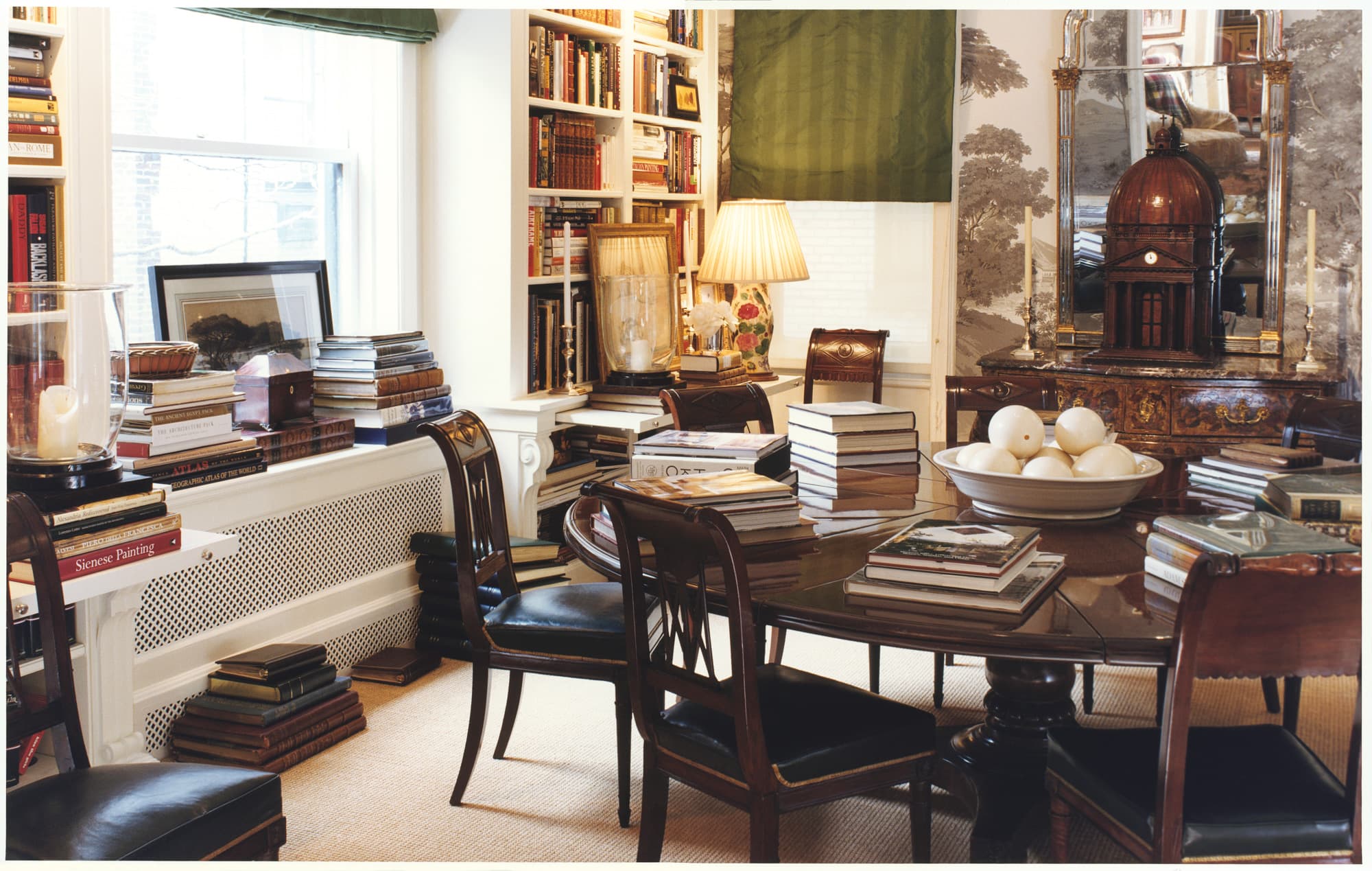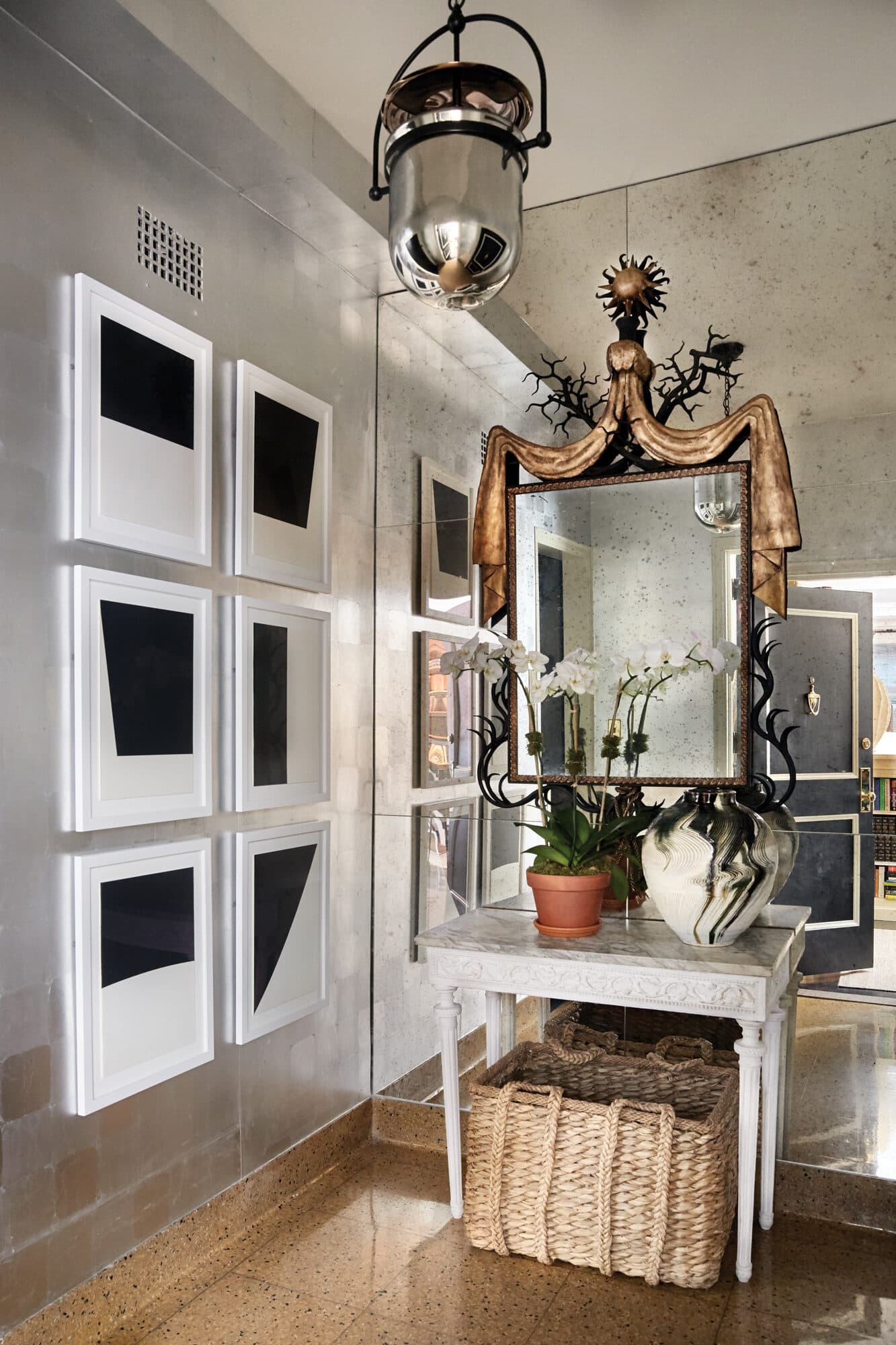Designing a memorable room is a rare skill; being able to explain just how it came together is even rarer. In his new book, David Netto (Vendome), the eponymous decorator shows off his talent for both, making good use of his other career as an accomplished journalist to demystify the process (or, at least, his own). Whether outfitting his first “grown-up” apartment in Manhattan or decorating a grand Bel Air manor, his knack for recontextualizing pieces from the past (a talent he attributes to growing up reading design magazine in the 1970s, “when people weren’t intimidated to mix antiques into modern environments,” he writes) shines through in every project. We asked Netto to take us behind the scenes of a few of his favorites to show us how it’s done.
-
 KATRINA DICKSON
KATRINA DICKSONInterior designer David Netto.
-

David Netto (Vendome), $75, bookshop.org
1. MODERN HISTORY
“Great antique furniture does not necessarily mean pre-20th century. This table, an early work by Jacques Adnet (c. 1940), has all the handmade character and presence of something from the Renaissance or Baroque periods. (I love the ceramic legs, which remind me of an Art Deco skyscraper.) It’s one of the most exciting pieces I have ever bought—and I went in person to the auction to make sure I won it, the way you would pick up a beautiful girl at her door if you wanted her to know you were real sweet on her.”

2. PERFECTLY IMPERFECT
“I can’t take much credit for the magnificent antique furniture in this room, which all belonged to the parents of my clients, but I did know how to give it a context—and make a little bit of a mess with the books, to keep things from getting too stately.”

3. SIMPLE PLEASURES
“The wonderful thing about a Gustavian commode is its plainness. Swedish furniture has an innocence that French furniture of the same period—the late 18th century—does not. When you look at this piece, you might admire its elegant lines and crisp details, but I just fell in love with the life in the wood. It pairs well with art by Hans Arp, a Japanese bronze vase, and ceramic lamp by contemporary Los Angeles artist Jennifer Nocon.”

4. MIRROR IMAGE
“This picture is all about what you can do next if you have one good thing to work off of, in this case the console table. It was originally gilded, which looked sad and hotel-y; I painted it white and then dropped in all those cool elements around it, including the wall of mirror and the Ellsworth Kelly prints we got at auction.”

5. READING ROOM
“Architect Gil Schafer and I took out walls and replaced them with those half-height bookcases; then the client and I fell in love with the tall bookcases made by Albert Hadley, which blur the line between architecture and furniture. So we have a room full of books, which is always a great idea. But, for me, the real star here is the great Louis XV chair from Gerald Bland, which I’d had my eye on for a while.”

6. DRAMA CLASS
“I had a completely different place in mind for these splendid 18th-century Italian cabinets found at Robert Kime, but the client liked them so much she wanted them front and center, instead of the drinks table I had planned. They still look a little weird to me, but why fight drama? Or success? Decorating is a reciprocal process. The urns on top once belonged to Henri Samuel.”

7. GOING BOLD
“Now here is an example of an opportunity to use great antiques—if you have the confidence. This neo-Egyptian Empire console would have been incredibly expensive in the 1980s, but today no one knows what to do with it. We grabbed it at auction to anchor the end of a long gallery, where I needed some heft and theater. I knew that this piece next to the client’s collection of contemporary photography would be cool, and you know what I learned from Jacques Grange? Always include a touch of the exotic.”

THIS ARTICLE ORIGINALLY APPEARED IN VOLUME 10 OF FREDERIC MAGAZINE. CLICK HERE TO SUBSCRIBE!
















